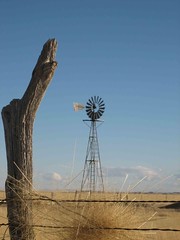The boy dropped off his pass-along copy of the Nov. 16 Rolling Stone, that I might enjoy Jeff Goodell’s powerful strange and fascinating piece about Lowell Wood and geoengineering. Wood’s idea – not really “Wood’s idea,” really “lots of people’s idea” – is to pump shit into the atmosphere to cool things off, a geoengineering approach to the question of climate change, kind of like optimistically drinking a lot of coffee before you drive home from the bar.
The idea frankly sounds batshit crazy, but I’ve got no real way to judge it on its technical merits. What I’m fascinated by is the the Goodell/RS rhetorical approach. Lowell Wood is a giant in batshit crazy military technology circles, a supreme optimist in his belief that our technological solutions will really turn out the way we intend them. This is the brains behind Star Wars (the missile defense technology, not the epic film series). Star Wars was batshit crazy – would never have worked. But it didn’t really have to in order to succeed. All that really had to happen was for the Soviets to think it might work, and that we’d be crazy enough to try it. The Soviet military apparatus, you see, was infested with people every bit as batshit crazy as Wood.
Goodell/RS (I’m lumping them together because one cannot distinguish between writer and editor/publisher) entertains Wood’s geoengineering ideas, treats them with profound seriousness, while at the same time baldly calling them “nefarious” and absolutely loving the “Dr. Evil” appelation. Goodell could have done a story about perfectly serious, not batshit crazy people who are serious about geoengineering to deal with climate change. But the idea sounds so perfectly batshit crazy that Wood seems the perfect vehicle through which to tell the story.
This is postmodern, ironic journalism, right? (See Colbert, Stephen)




